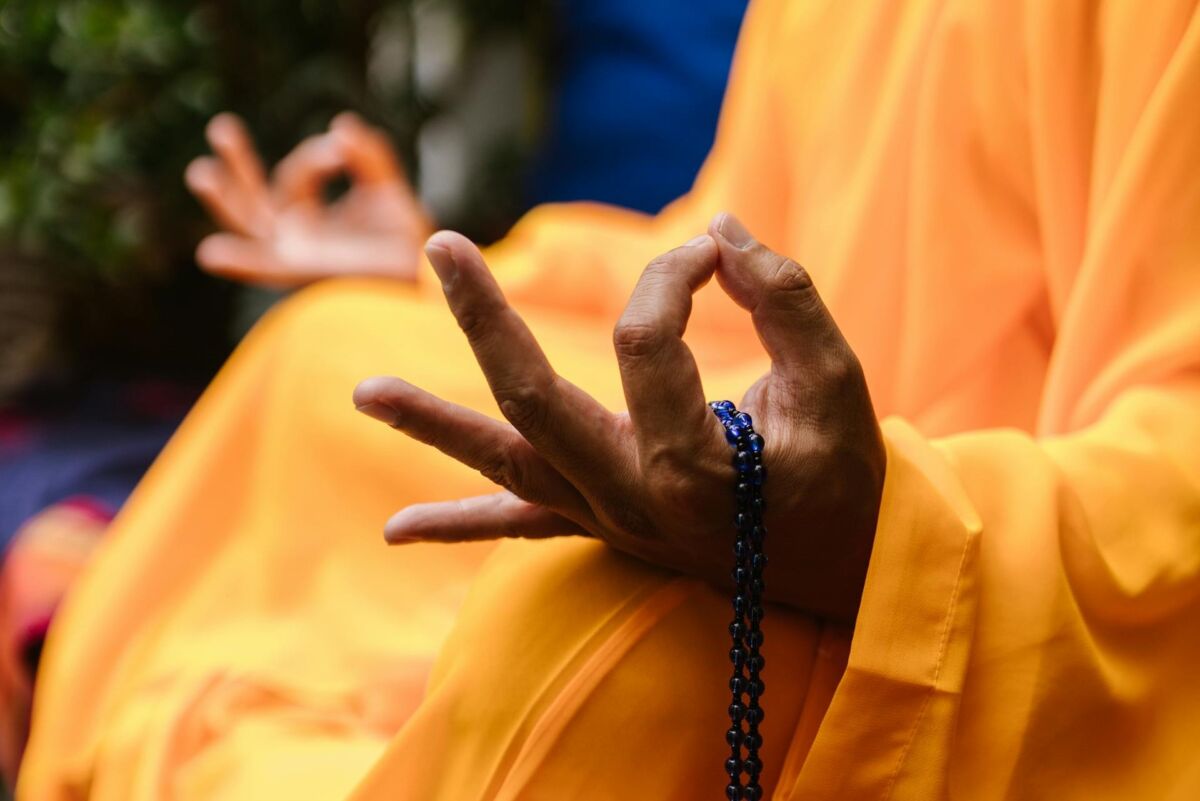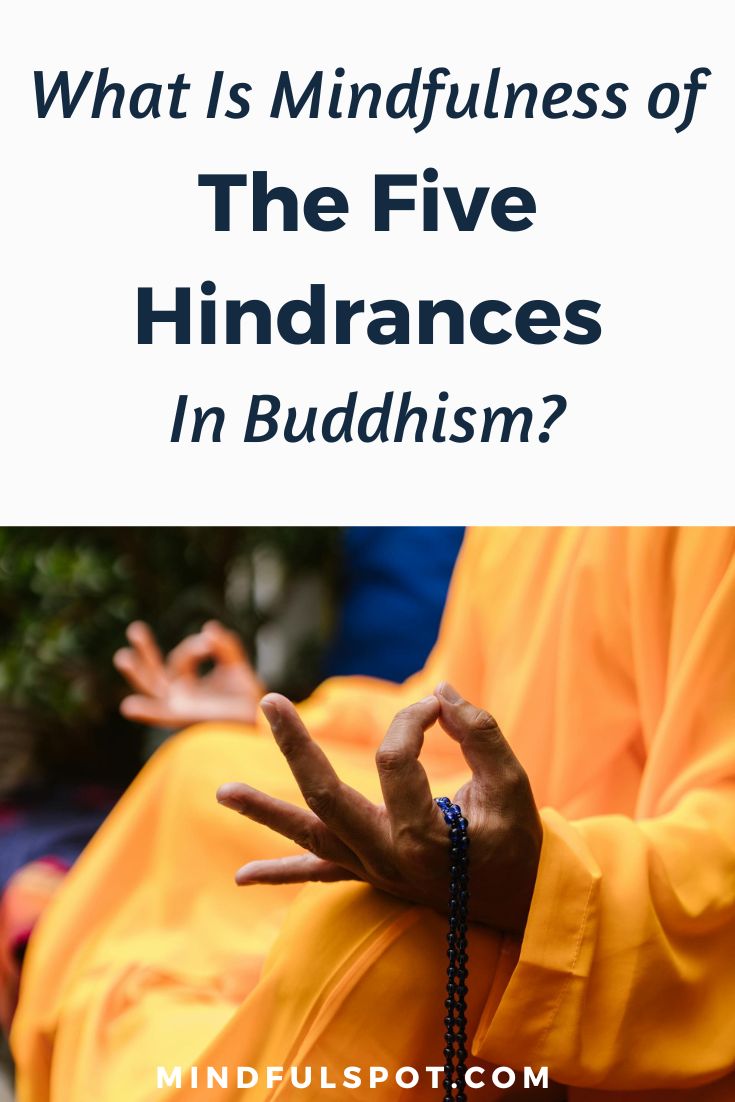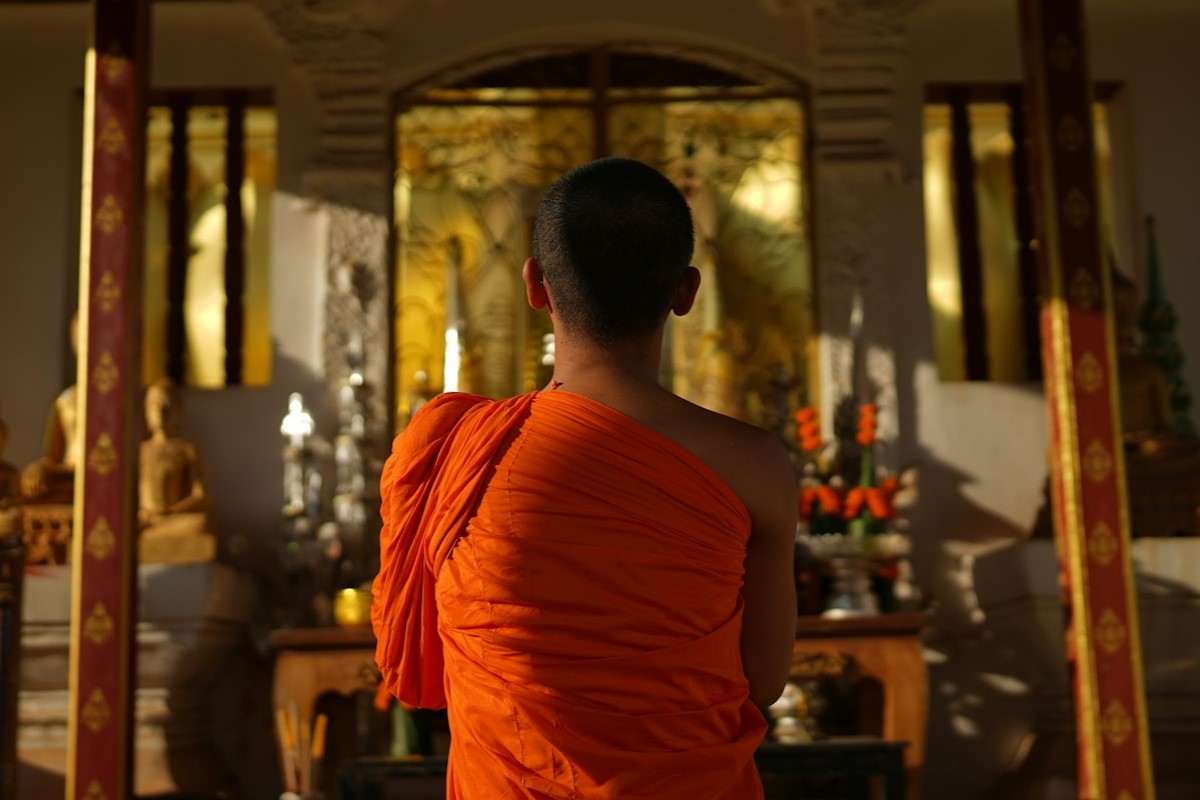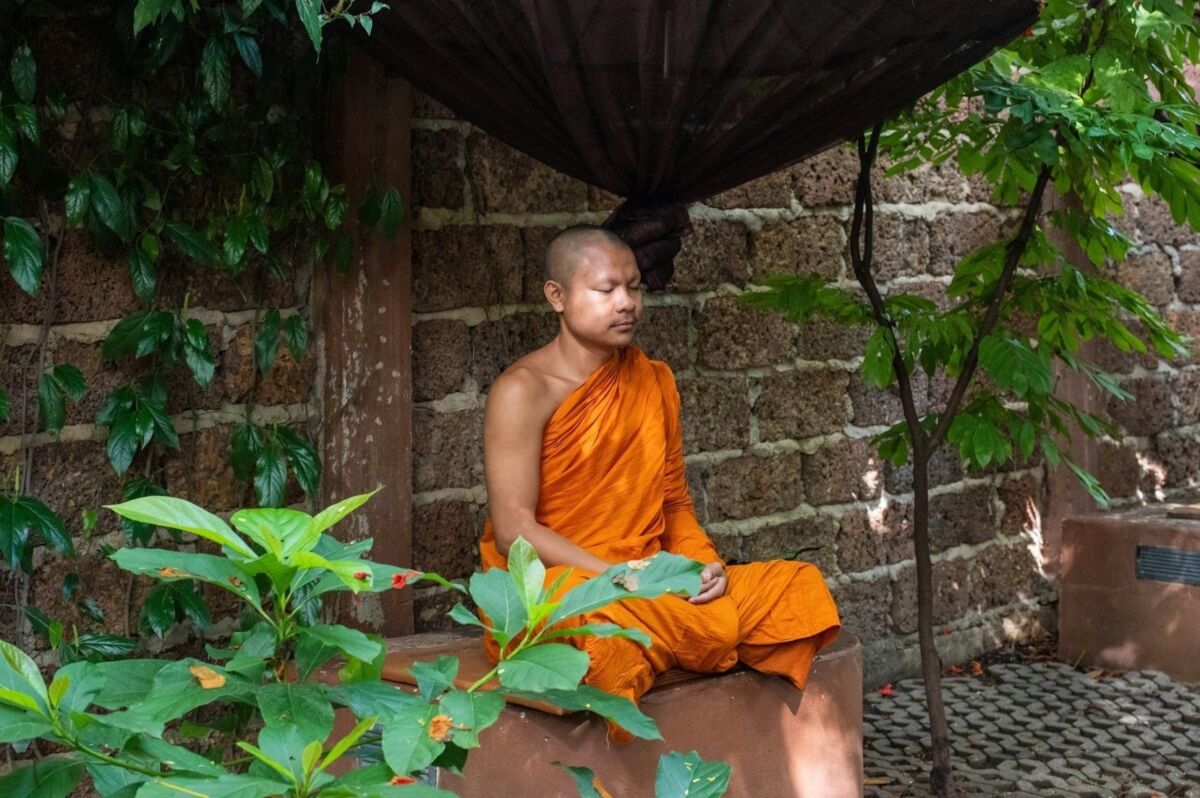In Buddhism, meditation means “mental culture.”
One of its main aims, among other things, is to cleanse your mind of impurities and disturbances. The main obstacles to achieving this goal are the five hindrances, which erode the foundation of your conduct in its mental, verbal, and physical dimensions.
“It is helpful to explore the texture of the mind that is under the influence of a hindrance,” Bhikkhu Analayo writes in his book Satipatthana: A Practice Guide. Then he adds, “Learning how to surpass this obstructive condition will lead in the direction of the mind increasingly becoming greater, more liberated, and more concentrated.” According to the Buddha, the five hindrances are:
sensual desire
anger
sloth-and-torpor
restlessness-and-worry
doubt
Analayo starts with the instruction for contemplation of the first hindrance from an ancient Buddhist sutra:

FREE Self-Test: How Spiritual Are You?
If sensual desire is present within, one knows: “sensual desire is present within me;” or if sensual desire is not present within, one knows: “sensual desire is not present within me;” and one knows how unarisen sensual desire arises, one knows how arisen sensual desire is removed, and one knows how removed sensual desire does not arise in the future.
He continues by noting that “this type of instruction applies to each of the five hindrances” and adds:
Contemplation of a hindrance [proceeds] through two stages. The first stage is the recognition of the presence or absence of a hindrance in the mind. The second stage involves … a practical exploration of conditionality. Such exploration concerns the conditions that led to the arising of a particular hindrance, the conditions that can lead to its removal, and the conditions that can prevent its recurrence.
He then explains that the in some cases the first stage, mindful recognition, can be enough to overcome a particular hindrance:
This two-stage procedure can conveniently be related to the fact that a hindrance can manifest in different degrees of strength. In the case of a weak occurrence of a hindrance, mindful recognition may be enough for it to disappear. In such a case, from a practical viewpoint we might just resume our main practice. After all, conditions for its arising must have been rather weak and the condition leading to its removal has clearly been mindfulness in itself.
However, Analayo warns that sometimes becoming aware of a hindrance is not enough:
At other times, a hindrance can come up with greater strength. Becoming aware of it does not in itself suffice. This seems the appropriate situation for proceeding to the second stage of contemplation of the hindrances. In this way, the presence of a hindrance in the mind can become a learning opportunity. The learning opportunity it affords concerns the conditionality of our own mind, in particular those conditions that led to the arising of the hindrance as well as those conditions most helpful for emerging from it and preventing its recurrence.
For example, Analayo continues, you can ask yourself, “How did I get into this?” “How come I am now in this situation?” Then he writes: “This involves almost an element of playfulness, combined with a strong intention to win the game,” and “by cultivating such an attitude, [you] learn to take a hindrance less personally:”
Taking a hindrance less personally not only eases possible tenseness of the mind when the presence of a hindrance is recognized, it also pays off in relation to it future recurrence. The degree to which this particular mental condition can actually function as a “hindrance,” in the sense of obstructing our inner clarity, is inexorably interwoven with the degree of our identification with the images and associations it conjures up in the mind. The more we grow accustomed to no longer taking it personally, the better our chances that the next time it manifests, we will be less easily caught up in [its] tendrils.
How to Practice Mindfulness of the Five Hindrances (Guided Meditation)
Use this guided meditation narrated by Bhikkhu Analayo, courtesy of Windhorse Publications:
In Buddhism, mindfulness of the five hindrances is a part of Satipatthana Meditation that leads to Nirvana and is preceded by mindfulness of mental states, mindfulness of feelings, mindfulness of death, mindfulness of the four elements, mindfulness of anatomical parts, mindfulness of bodily activities, and mindfulness of bodily postures. Complement with our article on the five sublime states of mind.
About the book’s author: Ven. Bhikkhu Analayo was born in 1962 in Germany, was ordained in 1995 in Sri Lanka, and completed his PhD on satipatthana at the University of Peradeniya in 2000. At present, he is mainly engaged in the practice of meditation, and among other things contributes to the Encyclopaedia of Buddhism. He has authored several books on Buddhist practice, including Satipatthana and Compassion and Emptiness in Early Buddhist Meditation.
Editor’s note: This article was updated with guided meditation by Bhikkhu Analayo.

FREE mindfulness resources for stress relief
I’m a freelance writer and mindfulness advocate behind this blog. I started my meditation practice in 2014, and in 2017 I launched this website to share what I learn with others. Here are the three things you can do here:
1. Schedule a free consult if you want to learn Buddhist meditation.
2. Download free mindfulness resources for stress relief
3. Join Patreon for exclusive content and community meetings.









